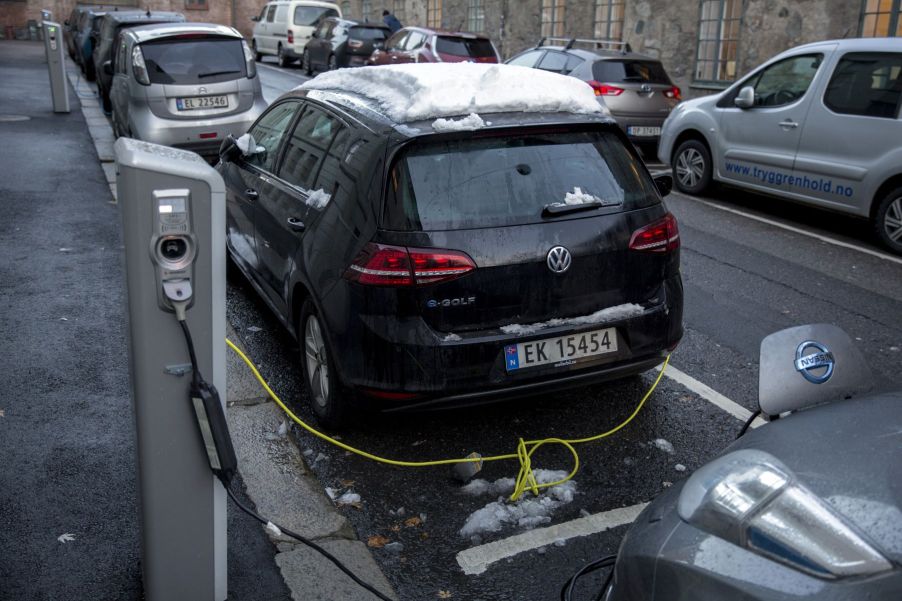
Which EV Charges the Fastest in Cold Weather?
Now that EVs have been around for a few years, we’re beginning to learn about how they age and other surprising factors, such as the range of most EVs decreases in the cold. We’re also now learning that they don’t charge as fast. Some EVs perform better than others, but which ones?
Welcome to Norway, a home for EVs

It’s easy to listen to automakers who claim their EV is the absolute best and that it eats snow for breakfast. However, Automakers’ first goal is to sell cars, so they aren’t going to be quite as upfront as we’d like.
This is why the Norwegian Automobile Federation (NAF) decided to perform a test on 20 electric vehicles in Norway to see which one is the best, according to Green Cars. These included the Nissan Leaf, Tesla Model X, Jaguar I-Pace, Opel Ampera-e, Tesla Model 3, Renault Zoe, Tesla Model S, Seat MII Electric, Volkswagen e-Golf, Skoda Citigo-e, Volkswagen e-Up, Audi Quattro 50, Audi Quattro 55, Kia e-Niro, BMW i3 120Ah, Hyundai Ioniq, Kia e-Soul, Mercedes EQC, Hyundai Kona, and the Nissan Leaf 40 kWt.
Inside EVs reports, “The tests started in Oslo and ended in Hafjell, which is normally a 200 km (124 mi) journey, but the evaluation extended that route to 482 km (300 mi) to cope with the cars with more range. They went through city and highway driving and at least a mountain pass. Speeds ranged from 60 km/h (37 mph) to 110 km/h (68 mph). The idea was to run the EVs until the battery was completely discharged.”
Other factors considered during the test included driving the vehicles for at least two hours to keep the batteries warm. The test revealed that most EVs have 18.5% less range than automakers advertise on average when driven in cold temperatures. The Hyundai Kona proved the most faithful to its advertised range, losing only 9.91% of its promised 278 miles.
However, there was another vehicle that really stood out during the test, and that was the Audi e-tron Quattro.
The Audi e-tron 55 Quattro charged the fastest
In terms of how fast each EV could charge in cold weather, the Audi e-tron 55 Quattro did it the fastest. In fact, it only took 27 minutes to charge from 10% to 80%.
Drive Electric Vermont reports other reasons why the e-tron 55 Quattro makes a great winter EV. The seats are heated, as well as the steering wheel. If you happen to be in Europe, you can get an e-tron with a heat pump, but that option isn’t available in the U.S.
With a starting price of $66,995, the e-tron Quattro is a bit out of the price range for most consumers, but it’s definitely worth checking out if you can afford it.
The test results on EVs won’t be valid for long
While this was a fascinating test and will most likely be performed again in the coming years, it’s important to keep a few facts in mind. One of the biggest is that many of the vehicles tested aren’t available in America.
Something else you should keep in mind is that the technology used on EVs is constantly changing. As problems arise, such as cold weather issues, automakers are swiftly seeking ways to improve or eliminate them. With this in mind, some of the EVs that have been released since the test was performed or are in development will likely show better charging times during cold snaps.
Finally, this test only looked at 20 EVs. While that’s a solid number, there are most likely some EVs that may have performed slightly better. Regardless, these test results will soon be dated, and we’ll have to wait for the next round to see if the Audi e-tron Quattro can hold its crown.


